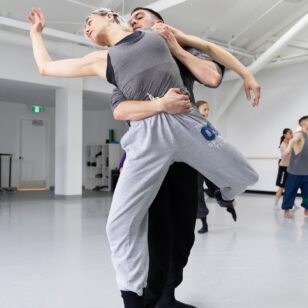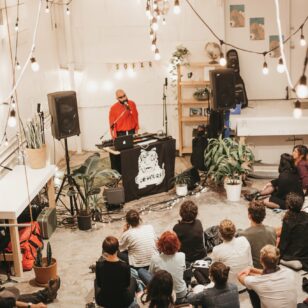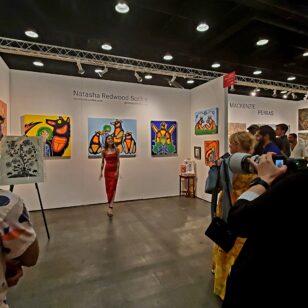
This image is a fragment from a devil tunic worn for Christmas plays in Michoacan, Mexico. Made by Felipe Horta, Tocuaro, Mexico. Photo by Alina Ilyasova. Courtesy of Museum of Anthropology at UBC.
When many people think of Latin American art, joyously vibrant colours often come to mind. However, beneath this celebratory aesthetic lies an undercurrent of resistance woven into the fabric of these creations.
The Museum of Anthropology (MOA) at UBC is launching a new exhibition that explores the tensions and possibilities in the spaces between Latin American art and politics. It is bound to educate visitors about the power of art to express, resist, and transform.
From now until October 8, 2018, the MOA (6393 NW Marine Drive) will be presenting Arts of Resistance: Politics and the Past in Latin America, curated by Laura Osorio Sunnucks, MOA’s Mellon Postdocoral Curatorial Fellow for Latin America. The exhibition draws upon MOA’s existing collection, as well as over a hundred new works that Sunnucks commissioned from her research in towns throughout Mexico and Guatemala. The pieces include folkloric ceramics from Quinchamali, a town south of Santiago; Tigua paintings from Ecuador; and amate paintings from rural Guerrero. Other areas represented include Chile, Peru, and El Salvador.

Photo Credit: Tara Lee
Sunnucks gave a tour of the exhibition before opening day, explaining the thinking behind her choices and arrangement of objects. Arts of Resistance is organized into five thematic areas that look at various ways marginalized groups (especially Indigenous rural peoples and women) have leveraged their artistic and folkloric creations in order to challenge violence, colonialism, and (state-sponsored) terrorism.

A huipil
Upon entering, visitors will encounter “Soft Power,” a provocative display of Maya dress and textiles from Guatemala and southern Mexico. Items like huipiles (blouses) may look like merely pretty items, but are connected to female power, fertility, and community, especially within the context of high rates of femicide within Mexico.

Part of a Piraq Causa (Who is to Blame?) series that denounces human rights abuses against the Indigenous inhabitants of Ayacucho in the 1980s; Photo Credit: Tara Lee
The other thematic areas include “Alternative Stories,” in which rural, Indigenous, and diasporic people reinterpret traditional art forms, like pre-Hispanic iconography, in order to tell narratives that resist oppressive mainstream versions of the truth.

Photo Credit: Tara Lee
“Sympathy for the Devil” deconstructs devil symbols and carnival costumes in order to question imposed Christianity and the demonizing of existing Indigenous spirituality. Meanwhile, “The Defence of Maize” looks at graffiti work, meshed with pre-Hispanic maize symbols, that explores the impact of transgenic maize on the local culture and economy in Mexico; and, finally, “Summoning the Ancestors” focuses on kené design in a visual and auditory performance and affirmation of traditional and evolving Shipibo-Konibo healing practices.

Photo Credit: Tara Lee
In order to highlight the living nature of these artistic forms and resistances, the exhibition will feature two multi-sensory installations. “Summoning the Ancestors” involves the mural work of Olinda Silvano and Silvia Ricopa, members of a women’s art collective from the Amazonian Shipibo-Konibo diaspora in Lima, Peru. The kené mural depicts the powerful energy of Rumi, the mother of the earth and water, as well as a map of the Ucayali region in the Peruvian Amazon. An audio recording of the two artists singing will be played alongside the mural, and the two women will also perform during the exhibition’s opening ceremony on May 17 from 7pm to 10pm.

Photo Credit: Tara Lee
The other multi-sensory installation is the graffiti done by the Oaxacan collective, Lapiztola. Their sound, light, and stencil installation will speak of the multi-layered experience of an Indigenous insurgency in Oaxaca in 2006.
Overall, Arts of Resistance does provocative work in showcasing a variety of Latin American artistic creations and their ability to give those on the margins mediums for agency, renewed cultural identity, and creativity.
Further information can be found on-line.
















